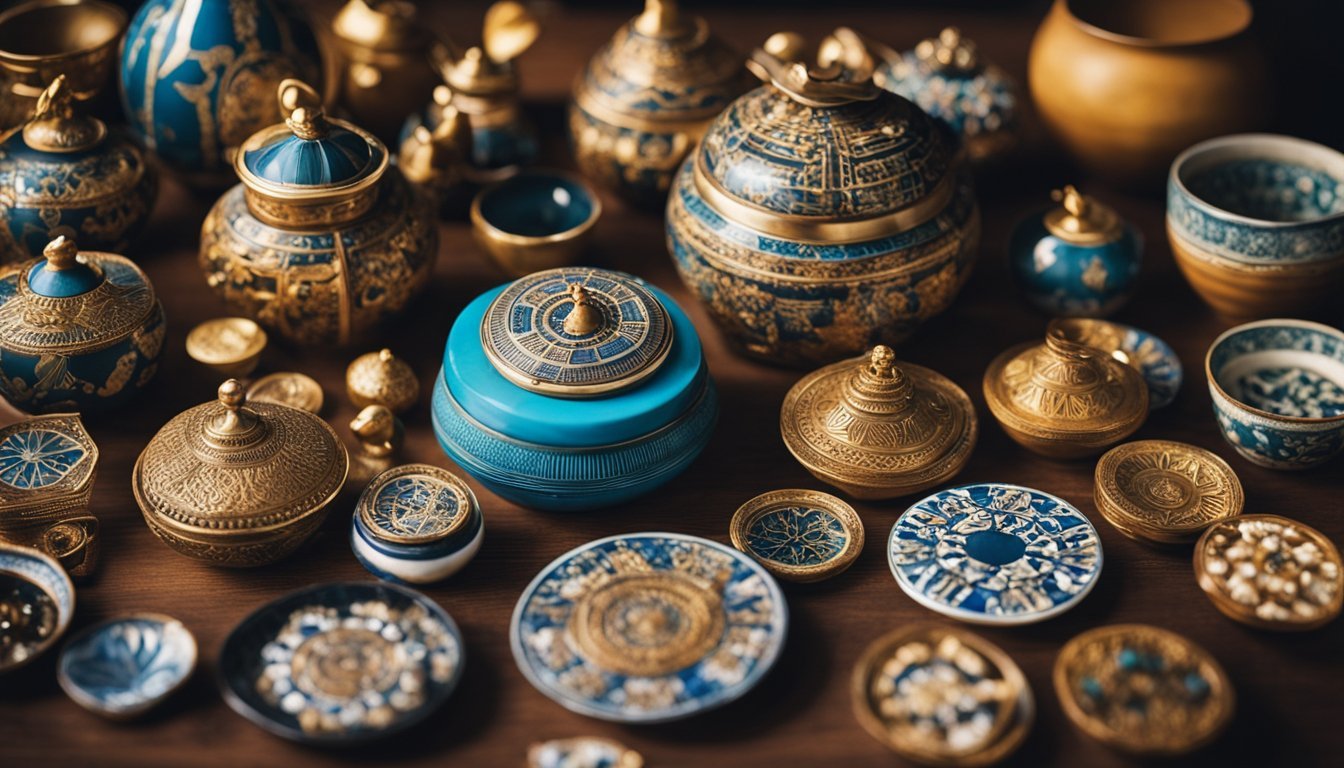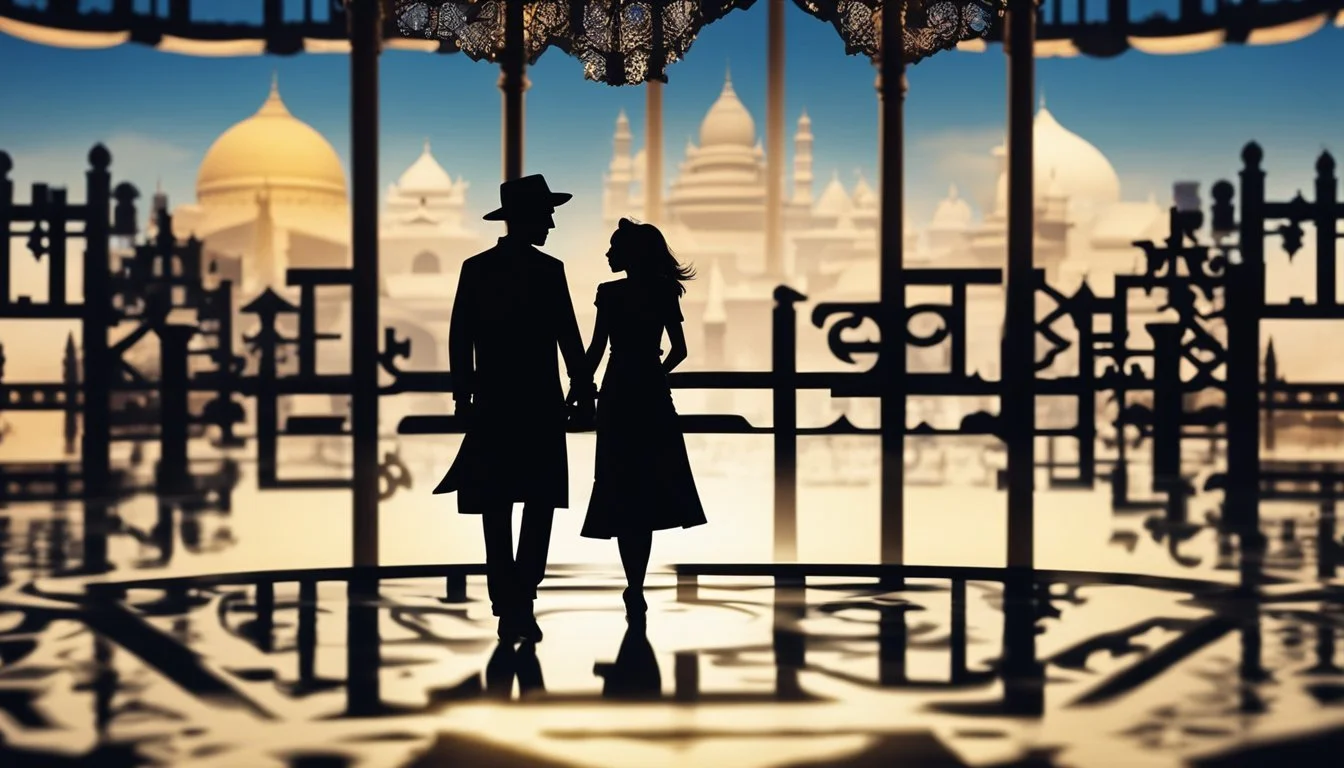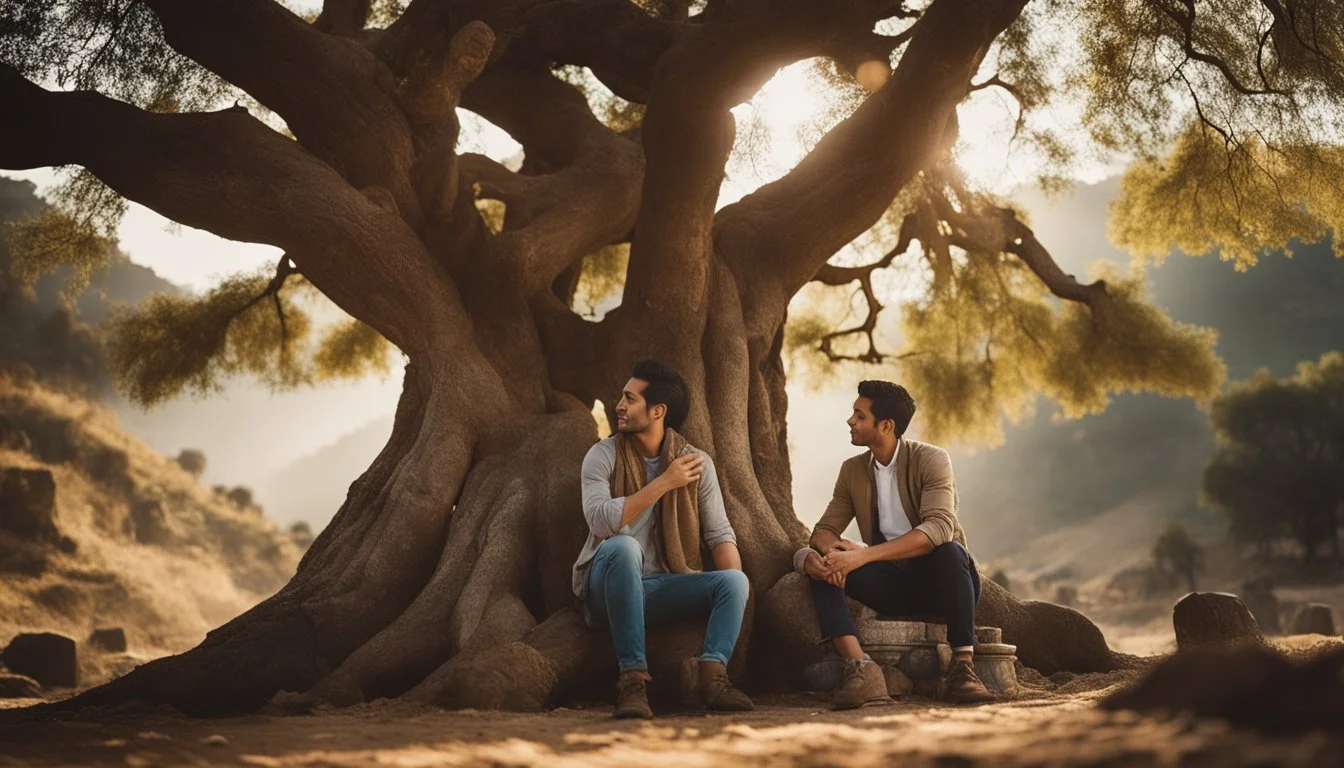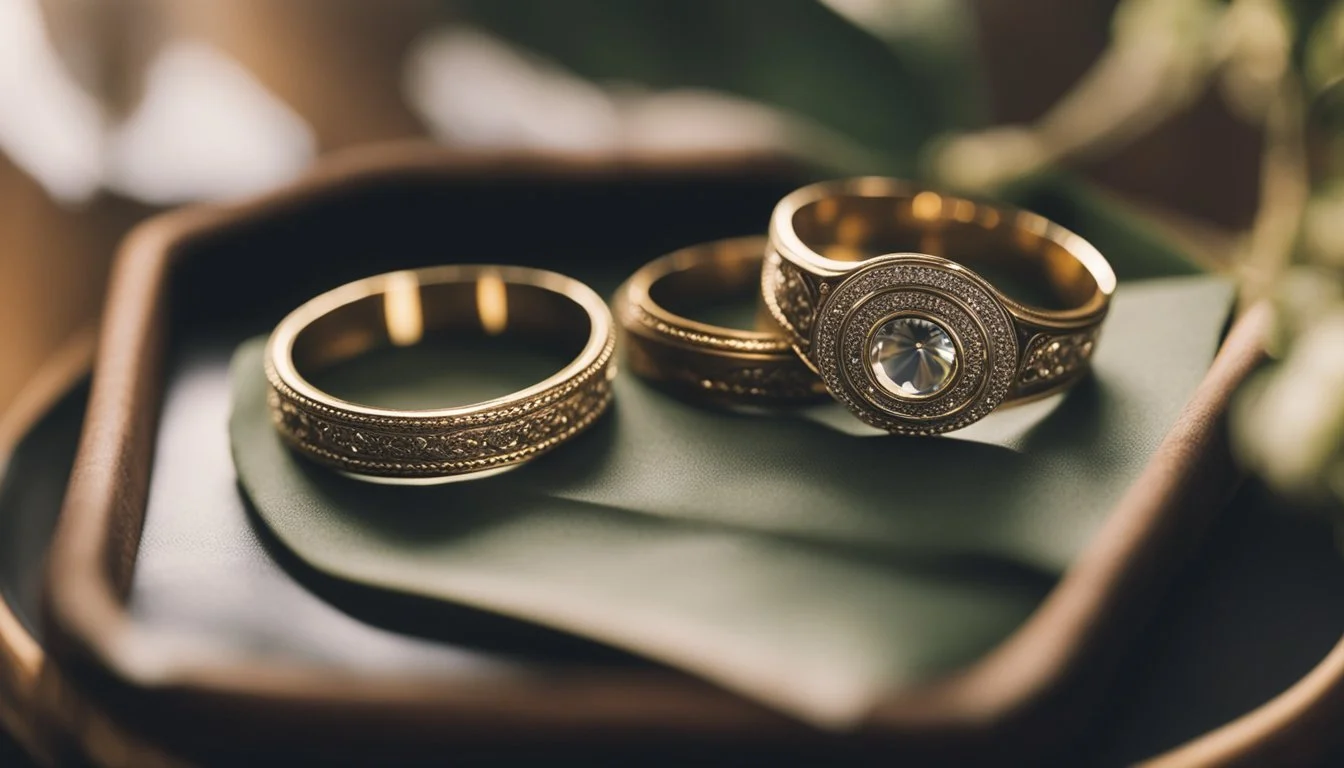6 Documentaries That Highlight the Role of Love in Cultural Heritage
Exploring Emotional Connections to Tradition
Documentaries serve as powerful tools for exploring the intricate connections between love and cultural heritage. Through captivating visuals and compelling narratives, these films shed light on how affection and cultural traditions intertwine across diverse societies.
These six documentaries offer viewers a unique perspective on the profound impact of love in shaping and preserving cultural identities. From ancient customs to modern relationships, they showcase the enduring power of human connection in maintaining cultural legacies. By examining various expressions of love within different cultural contexts, these films provide valuable insights into the universal nature of human emotions and their role in cultural preservation.
1) 'Cherish Encore' by Raoul Peck (2024)
'Cherish Encore' is a thought-provoking documentary that explores the intersection of love and cultural heritage. Raoul Peck, known for his incisive filmmaking, turns his lens to the power of affection in preserving traditions.
The film showcases diverse communities around the world, highlighting how love for one's roots fuels efforts to maintain customs and practices. Peck interviews elders passing down stories, artisans teaching ancient crafts, and young people embracing their heritage.
Through intimate portraits, 'Cherish Encore' demonstrates how emotional connections to culture inspire individuals to become stewards of their history. The documentary emphasizes the role of familial and community bonds in cultural transmission.
Peck's work illuminates the challenges faced by marginalized groups in preserving their heritage. It also celebrates the resilience and creativity of those who find innovative ways to keep their traditions alive for future generations.
More information on Raoul Peck's work
2) 'Our Heritage' by Mira Nair (1985)
'Our Heritage' is a documentary directed by acclaimed filmmaker Mira Nair. The film explores the rich cultural tapestry of India, focusing on the intersection of love and tradition.
Nair's unique perspective as an Indian-born director who later moved to the United States shines through in this work. She captures intimate moments that reveal the deep connections between personal relationships and cultural identity.
The documentary showcases various aspects of Indian life, from bustling city streets to quiet rural villages. It examines how love manifests in different social contexts and across generations.
Nair's keen eye for detail brings to life the nuances of Indian customs and rituals surrounding love and marriage. The film offers a thoughtful exploration of how these traditions shape and are shaped by individual experiences.
'Our Heritage' stands as an early example of Nair's ability to bridge cultural divides through her storytelling. It laid the groundwork for her later acclaimed works that continue to explore themes of love, culture, and identity.
3) 'Love Letters' by Agnès Varda (1969)
'Love Letters' is a documentary by renowned French filmmaker Agnès Varda that explores the concept of love through personal letters. Varda interviews people from various backgrounds, asking them to read love letters they have received or written.
The film showcases a diverse range of emotions and experiences related to love. Varda's unique approach allows viewers to connect with the intimate stories shared by the participants.
Through these personal narratives, the documentary highlights how love shapes cultural heritage and personal identities. Varda's skilled direction brings out the raw emotions in each letter, creating a powerful and moving experience for the audience.
'Love Letters' demonstrates Varda's ability to capture the essence of human relationships on film. Her innovative storytelling techniques and empathetic approach make this documentary a significant contribution to the exploration of love in cinema.
More information on 'Love Letters' by Agnès Varda
4) 'Culture in Love' by Ken Burns
Ken Burns, renowned for his in-depth historical documentaries, explores the intricate relationship between culture and love in 'Culture in Love' (2022). This film examines how romantic relationships have shaped and been shaped by various cultural traditions across America.
Burns interviews couples from diverse backgrounds, highlighting their unique experiences and challenges. He delves into the evolution of courtship rituals, marriage customs, and expressions of affection in different communities.
The documentary features archival footage and photographs, providing a visual journey through changing societal norms. It showcases how cultural heritage influences romantic ideals and practices, from Native American tribes to immigrant communities.
'Culture in Love' also addresses contemporary issues, such as interracial relationships and same-sex marriages. Burns presents these topics with sensitivity and nuance, emphasizing the power of love to bridge cultural divides.
Through personal stories and expert insights, the film illustrates how love acts as a catalyst for cultural exchange and preservation. It demonstrates that romantic bonds often serve as conduits for passing down traditions to future generations.
More information on Ken Burns' documentaries
5) 'Heritage of the Heart' by Ava DuVernay (2023)
'Heritage of the Heart' is a thought-provoking documentary that explores the intersection of love and cultural heritage. Ava DuVernay, known for her powerful storytelling, delves into personal narratives that illuminate how love shapes our connection to our roots.
The film features interviews with individuals from diverse backgrounds, each sharing how familial bonds and romantic relationships influence their cultural identities. DuVernay's lens captures intimate moments, revealing the ways in which love acts as a bridge between generations and cultures.
'Heritage of the Heart' examines how cultural practices and traditions are preserved and adapted through acts of love. It showcases rituals, celebrations, and everyday interactions that demonstrate the vital role of affection in maintaining cultural continuity.
DuVernay's documentary also addresses the challenges faced by intercultural couples and families. It presents honest discussions about navigating differences and finding common ground through love and mutual respect.
The film's visual style combines archival footage with contemporary scenes, creating a rich tapestry of cultural expression. DuVernay's direction brings warmth and authenticity to each story, inviting viewers to reflect on their own heritage and relationships.
Learn more about Ava DuVernay's work
6) 'Endearment Tales' by Asghar Farhadi (2024)
'Endearment Tales' is a poignant documentary by acclaimed Iranian filmmaker Asghar Farhadi. The film explores the intricate connections between love and cultural heritage in modern-day Iran.
Farhadi's signature style of nuanced storytelling shines through as he captures intimate moments between couples, families, and communities. The documentary showcases how love shapes and preserves cultural traditions across generations.
Through a series of vignettes, 'Endearment Tales' examines the role of affection in maintaining artistic practices, culinary traditions, and social customs. Farhadi's keen eye for detail brings to life the subtle ways in which love influences daily rituals and long-standing traditions.
The film also touches on the challenges faced by couples as they navigate societal expectations and changing cultural norms. Farhadi presents a balanced view of how love both reinforces and sometimes challenges traditional values.
'Endearment Tales' offers a rare glimpse into the private lives of ordinary Iranians, revealing the universal nature of love while highlighting its unique expressions within Iranian culture.
More information on Asghar Farhadi
Understanding Love's Impact on Cultural Heritage
Love shapes cultural heritage through intergenerational connections and community bonds. Its influence extends beyond romantic relationships to encompass familial ties and shared social values.
Intergenerational Transmission of Traditions
Familial love plays a crucial role in passing down cultural traditions. Parents and grandparents teach younger generations about customs, rituals, and values through everyday interactions and special occasions.
This process preserves language, culinary practices, and artistic expressions. Children learn traditional songs, dances, and storytelling techniques from their elders, ensuring the continuation of cultural art forms.
Love motivates families to maintain cultural practices, even in diaspora communities. This dedication helps preserve cultural identity across generations and geographical boundaries.
Community Bonds and Shared Values
Love fosters strong community ties that reinforce cultural heritage. Shared experiences and emotions create a sense of belonging among community members.
Cultural festivals and celebrations strengthen these bonds. People come together to express their love for their heritage through music, dance, and food.
Community love often manifests in collective efforts to preserve historical sites and artifacts. Local groups organize to protect landmarks, traditional crafts, and indigenous knowledge.
This communal affection extends to mentoring programs, where experienced practitioners guide younger members in traditional arts and practices. Such initiatives ensure the survival of cultural skills and knowledge.
Documentary Storytelling Techniques
Documentary filmmakers employ various techniques to convey cultural heritage stories effectively. These methods captivate audiences and provide deeper insights into traditions, customs, and historical significance.
Visual Narratives and Symbolism
Visual storytelling forms the backbone of compelling documentaries. Filmmakers use carefully framed shots, evocative imagery, and symbolic representations to enhance the narrative. Archival footage and photographs offer glimpses into the past, connecting viewers with historical contexts.
Time-lapse sequences capture the passage of time, illustrating cultural changes or the endurance of traditions. Close-ups of artifacts, traditional crafts, or cultural practices highlight intricate details and their importance.
Filmmakers often employ visual metaphors to convey abstract concepts or emotions tied to cultural heritage. These symbolic elements add layers of meaning and encourage viewers to engage more deeply with the subject matter.
Interviews with Cultural Custodians
Interviews with cultural custodians provide firsthand accounts and personal perspectives on heritage. Filmmakers carefully select interviewees who possess deep knowledge or unique experiences related to the cultural topic.
Expert historians, community elders, and practitioners of traditional arts offer valuable insights. Their testimonies lend authenticity and emotional depth to the documentary narrative.
Filmmakers use various interview styles, from formal sit-down conversations to more casual, on-location discussions. These interactions often reveal anecdotes, personal stories, and emotional connections to cultural practices.
B-roll footage interspersed with interviews helps illustrate the interviewees' points and maintains visual interest. This technique creates a seamless blend of spoken narrative and supporting visuals.







